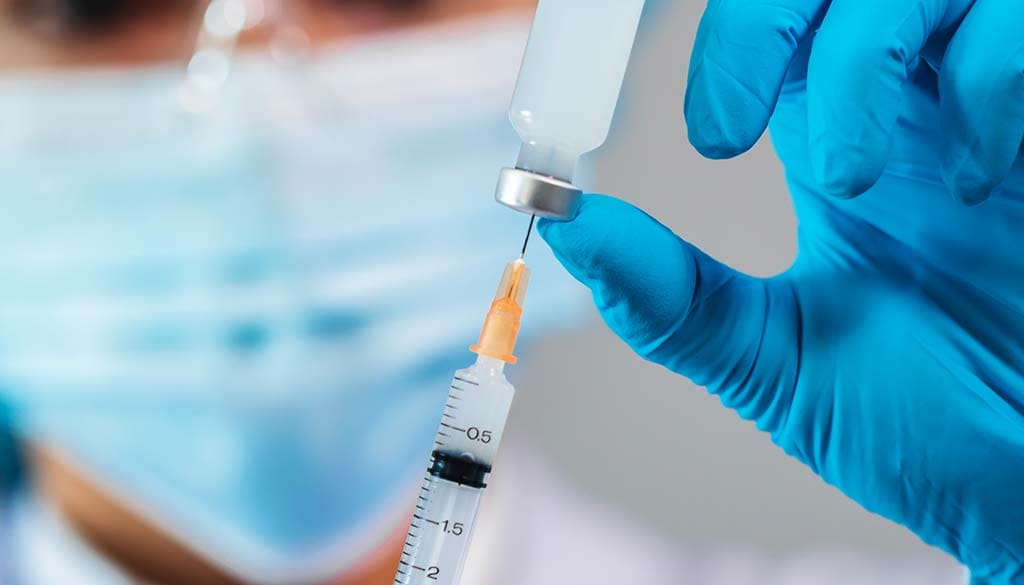Novartis introduced Beovu in late 2019. Its primary use is as a treatment for Wet Age-Related Macular Degeneration (Wet AMD). It’s also used to treat Diabetic Macular Edema (DME).
There were already drugs in the same class on the market to treat these diseases. They all required painful injections into the eyeball. What set Beovu (generic name: brolucizumab-dbll) apart from its competition is that doctors needed to give injections only once every eight to twelve weeks. The other drugs required these injections over less time — usually once every four weeks.
The initial praise of Beovu quickly turned when multiple reports of vision loss came soon after Beovu’s introduction. This showed Beovu was much riskier than other drugs in its class. To make matters worse, even after doctors warned of the dangers of Beovu, its maker continued not to warn patients.
This is the sort of negligence Join the Many is fighting to end. If you’ve been harmed by Beovu, contact us to learn more about how we can hold the makers accountable and connect you with the best legal care available.
A Brief History of Beovu

Beovu is a type of drug that blocks vascular endothelial growth factor (VEGF). VEGF is a protein that assists the growth of blood vessels. The idea behind anti-VEGF drugs for eye treatment is that, by blocking the growth of new blood vessels, anti-VEGF slows Wet AMD.
There are two types of AMD, Wet AMD and Dry AMD. Dry AMD accounts for 80% of AMD cases. Dry AMD is the breakdown of light-sensitive cells in the macula. The much more severe Wet AMD accounts for about 20% of AMD patients.
Wet AMD involves the growth of new abnormal blood vessels beneath the retina. Anti-VEGF drugs slow or prevent such growth. That means it slows the progression of Wet AMD. Since Wet AMD causes vision loss, these drugs slow or stop vision loss. At least, that’s what they do most of the time.
Anti-VEGFs have been on the market for eye diseases since 2004. They’re also used to slow or stop the growth of tumors for cancer patients. With tumors, they stop the growth of blood vessels that feed the tumors.
Over the past 18 years, since the FDA approved the first anti-VEGF to treat eye disease, they’ve proved to be safe drugs until Beovu hit the market.
Shortly after the federal Food and Drug Administration (FDA) approved Beovu, doctors noticed unexpected adverse reactions. These same doctors had used other anti-VEGFs for years without the reactions they noticed with Beovu.
Because of this, doctors didn’t wait for a new study from Novartis or the FDA. The American Society of Retina Specialists (ASRS) issued its own report on Beovu in February 2021. We cover this, along with other research, in more detail in the next section.
Research About the Risks of Beovu

Even before the FDA approved Beovu, there were indications of its danger. Healio, a publisher of medical journals, stated in its December 2020 edition that Beovu’s higher inflammatory reaction than competitor drugs like Eylea and Lucentis showed up in the data provided with the FDA application.
They speculate the FDA missed this safety signal. They go on to state that the result of Beovu’s approval is many severe cases of irreversible vision loss.
The American Society of Retina Specialists (ASRS) Report
In February 2020, the ASRS released a report regarding the risk of Beovu patients developing Retinal Vasculitis and Occlusive Retinal Vasculitis. The first report included information on 14 patients. The number quickly expanded to 25 before the ASRS updated its report.
Retinal Vasculitis is an extremely rare condition. It affects only one to two out of every 100,000 Americans in any year. It’s usually associated with viruses such as Lyme disease or toxoplasmosis. Yet, it’s relatively common for patients who have received Beovu injections.
Retinal Vasculitis is inflammation of the vascular branches of the retinal artery. This inflammation may cause many issues, including:
- Blurry vision
- Eye floaters
- Inability to tell colors apart
- Visual distortions
But it gets worse. In the ASRS study, 83% of the Beovu patients had Occlusive Retinal Vasculitis. This is a more severe condition that involves blockage of these vessels within the retina. The result is bleeding from the eyes. The risk of significant vision loss is high.
By now, you must wonder why Novartis didn’t recognize the risk before it applied to the FDA. Many people are asking the same question.
While there’s no evidence that Novartis tampered with the clinical data for its Beovu application, the New York Times reports Novartis hid adverse data in another drug application in 2019 — the same year the FDA approved Beovu. The FDA closed that investigation without a penalty for Novartis, but there is still controversy surrounding the incident.
Did Novartis hide information about the dangers of Beovu in its FDA application? We don’t know. As the discovery process is ongoing in lawsuits around the nation, many attorneys are seeking to answer that very question.
At the moment, whether Novartis hid crucial information is speculative. But other wrong-doing by Novartis in this case is settled fact.
Novartis Calls Off Three Clinical Trials
In May 2020, Novartis called off three post-approval clinical trials of Beovu over concerns about patient safety. But did they issue a warning about these newly identified risks? No. It wasn’t until June 2020 that Novartis updated their warning label to inform prospective patients of these risks.
Remember that the ASRS had provided Novartis with reports as early as February 2022. But Novartis took no action until June 2022. While Novartis was taking its sweet time, many more Beovu patients were suffering from the adverse effects of the drug.
Patients were enduring painful injections to save their eyesight. But the drug they were using was blinding them and the drug’s maker was doing nothing to warn them. What was Novartis waiting for?
If you are a Beovu patient suffering from vision loss, what happened to you isn’t right or fair. Connect with a network of people ready to fight for you when you Join the Many other Beovu patients that are working to protect their legal rights. We make it simple to learn if you qualify and take action.
A Look at Legal Proceedings Against the Makers of Beovu

Patients filed the first Beovu lawsuits against Novartis in January 2020. It’s rare for lawsuits to begin so quickly after a drug’s FDA approval. But it still takes time for lawsuits to work their way through the court system.
Opinions on the first major pre-trial motions are just now being issued by judges. The only published opinion to date is from a judge in the Federal District Court for the Eastern District of Arkansas. The publishing date for that opinion was September 19, 2022.
In that 24-page opinion, the judge denied Norvortis’ motion to dismiss. Often, when a lawsuit defendant’s motion to dismiss fails, they’re very interested in settling the case. Settlement talks often last a few months. So at this time, we can’t report on the ultimate outcome of the case. But from the information already noted, it seems unlikely that Novartis will want this case to go to trial.
The plaintiff, the patient that was harmed by Beovu, is asserting that Norvortis failed to provide adequate warning of the risks of Beovu causing vision damage. As a result, she suffered significant vision loss.
Novartis argued it couldn’t give an updated warning because the FDA would have to approve it. The judge disagreed since Novartis could add to its warning without FDA approval.
Failure to Warn
Lawsuits against pharmaceutical companies for defective drugs fall within the area of law known as products liability. When the company knows about risks to patients, they must adequately warn the patient. Otherwise, they’ll owe money to patients they didn’t warn.
Novartis first sold Beovu, in October 2019. In February 2020, the ASRS warned of Beovu causing severe vision loss. That isn’t the way it’s supposed to be. The drug maker needs to conduct sufficient trials to identify the risks before selling a drug to patients.
After doctors warned of the dangers, Novartis did nothing. It wasn’t until four months later, in June 2020, that they updated their warning labels regarding the specific issues the ASRS had complained of in February 2020.
It appears that Novartis gave no consideration to the thousands of patients who were at risk while it was deciding if it was going to issue a warning. They knew of the risks at least since February, but they didn’t listen to doctors. It’s a bad idea to use drugs from a company that doesn’t listen to the opinion of doctors. Doctors are the front-line experts that see the damage a bad drug causes.
If You Were Injured by Beovu, Novartis Should Compensate You
You accepted painful injections into your eyeball to avoid vision loss. Perhaps the medicine only made your condition worse, or even blinded you completely. The evidence shows had you used one of the alternative drugs available, it’s unlikely you would now have such issues.
Novartis knew of the risk, but they never warned patients. This carelessness cannot go unanswered. There are laws in place to protect victims, and Join the Many is ready to help those affected leverage every one to their advantage.
If you were harmed by Beovu, it’s time to Join the Many and get some of the compensation you deserve from Norvortis.

